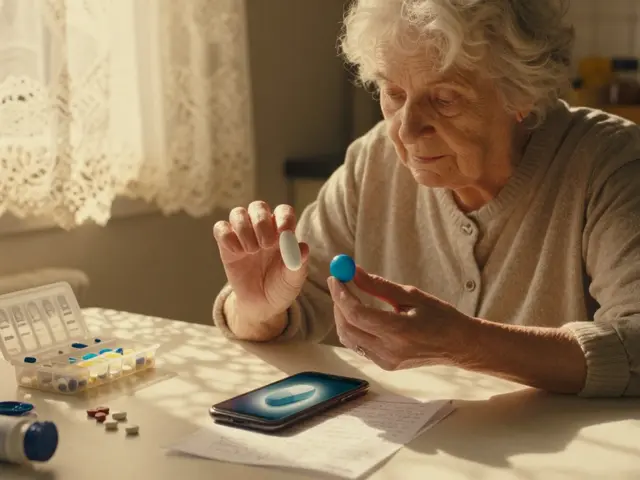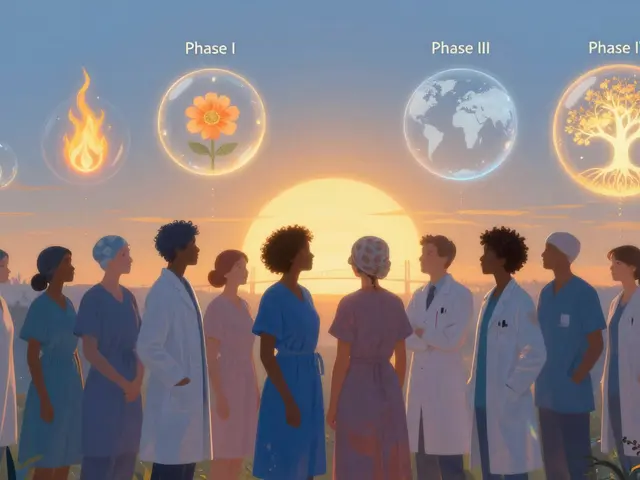Vision: Protect Your Eyes, Know Which Meds Can Affect Sight
Have you ever noticed blurred vision after starting a new medicine? That’s common. Some drugs change tear production, affect night vision, or cause temporary blurring. This page gives clear, useful steps to protect your eyes, spot drug-related problems, and know when to get help.
Everyday habits that actually help
Take screen breaks: follow the 20-20-20 rule — every 20 minutes look at something 20 feet away for 20 seconds. Wear sunglasses that block 100% UV when outside. Stay hydrated and sleep enough; dry eyes get worse from low fluid intake and late nights. If you wear contacts, never sleep in them unless prescribed and follow the care instructions to avoid infection.
Food matters. Leafy greens, oily fish, and foods with vitamins A and C support eye health. Many eye doctors point to lutein and zeaxanthin (found in green veggies and some supplements) as useful for long-term macular health; the AREDS2 research backs their role in slowing age-related macular degeneration in at-risk people.
Which medications can affect vision — and what to watch for
Don’t panic, but pay attention. Common effects include blurry vision, dry eyes, light sensitivity, double vision, and color changes. Examples you may hear about: isotretinoin (used for severe acne) often causes dry eyes and can reduce night vision; sedatives like diazepam may blur vision or slow visual reaction; some antihistamines and anticholinergic drugs cause dry eyes and focus problems. Steroid use — especially long-term — can increase the risk of cataracts or raised eye pressure, which an eye doctor can spot early.
How to act: always read the medication leaflet for eye-related side effects. If you start a drug and notice gradual changes, tell your prescriber. Sudden vision changes are different — treat them as an emergency.
Warning signs that need urgent care: sudden loss of vision, flashes of light, a sudden shower of new floaters, severe eye pain, or sudden double vision. These symptoms can signal retinal detachment, stroke, or acute glaucoma — call emergency services or see an ophthalmologist right away.
Routine eye checks catch problems early. If you’re healthy and under 40, get an eye exam every 2–4 years. After 40, aim for every 1–3 years depending on risk. If you have diabetes, high blood pressure, or take drugs known to affect eyes, see an eye doctor yearly or as recommended.
One last tip: keep a simple medicine log of prescriptions and over-the-counter drugs and share it at your eye visits. That one habit makes it far easier for your doctor to spot drug-related causes and adjust treatment safely.
Want more on how specific drugs affect eyesight or how to find safe pharmacies and prescriptions? Browse our RxStore-365 guides for clear, practical advice on medications and eye safety.
The Connection Between Low-Density Lipoprotein and Eye Health
As a blogger, I've recently discovered the fascinating connection between Low-Density Lipoprotein (LDL) and eye health. It's crucial to understand that high levels of LDL, often referred to as "bad cholesterol," can have negative effects on our eyes, potentially leading to conditions like age-related macular degeneration (AMD) and cataracts. Moreover, maintaining a healthy diet and lifestyle can help regulate our cholesterol levels and thus protect our vision. In conclusion, it's essential to keep an eye on our cholesterol levels to ensure our eyes remain in good health. So, let's make sure to keep our hearts and eyes happy by managing our LDL intake!
Read More




